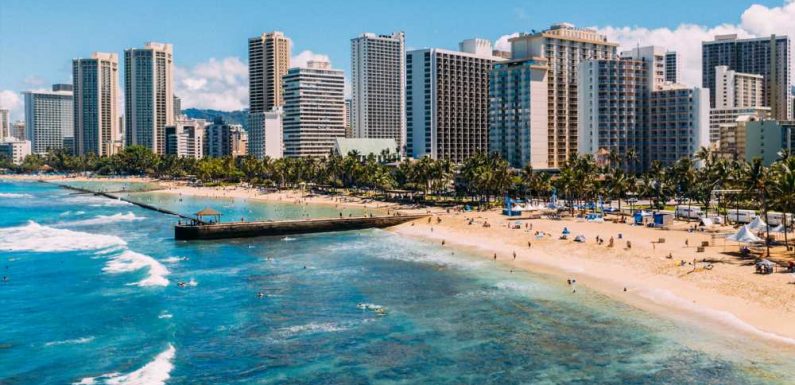
In a joint press conference held Friday, Hawaii Gov. David Ige and Honolulu Mayor Rick Blangiardi announced the easing of some restrictions on activities and gatherings imposed during a surge of Covid-19 cases, but they stopped short of welcoming visitors back to the islands.
In August, as the state reported spiking infection rates and hospital intensive care units reaching capacity, the governor recommended visitors postpone all trips to Hawaii through the end of October.
Additionally, Blangiardi, who oversees the entire island of Oahu, barred large gatherings and issued new restrictions on restaurants, bars and other businesses open to the public.
This week, the seven-day average in the daily number of new Covid cases in Hawaii fell 74%, from a peak of 884 in early September to 229. Hospital operations have largely returned to normal, reported Hilton Raethel, president and CEO of the Healthcare Association of Hawaii.
“With input from epidemiologists and public health specialists, we continue to determine the amount of risk we can accept in easing some restrictions in a very measured way,” Ige said.
“In reality, there is no simple metric that we can use to determine when it’s appropriate to ease restrictions. This is a complex equation that involves multiple considerations.”
Now, managed events, such as weddings, concerts and sports, will be allowed on Oahu with enhanced safety precautions.
Starting Oct. 13, outdoor seated venues, such as sports competitions and concerts, are allowed to operate at 50% capacity or a maximum of 1,000 attendees, whichever is fewer. All attendees at the events will be required to show proof of vaccination, physically distance from others not in their group and wear masks. Those working the events must either be vaccinated or get regular Covid-19 tests.
On Oct. 20, indoor seated entertainment venues will be allowed to operate at 50% capacity or a maximum of 500 attendees, whichever is fewer, while all attendees must follow the same rules as those for outdoor events.
Also on Oct, 20, private but managed outdoor events such as weddings and funerals will be allowed with a maximum of 150 people. All attendees must be vaccinated and wear masks, and the organizers must submit a mitigation plan to the county.
“This is an important first step for our industry to reopen,” said Joseph Esser, president of the Oahu Wedding Association. “It’s great progress, but we still have a lot more work to do.”
Esser said during September, members of the association reported losing in excess of 90% of their expected gross revenue because of the ban on large gatherings.
“Without the safety net of federal aid programs, it’s been hard to keep the doors open,” Esser said.
He added that he has a little “anxiety” about how the requirement for all wedding guests to be vaccinated will play out, and the association’s ultimate goal is to get past the “open-close, open-close” model of responding to the pandemic’s peaks and valleys.
Gov. Ige said he will be monitoring the Covid-19 numbers in the state and the reopening of events during the coming weeks to determine the appropriate time to welcome visitors back to the islands.
“Certainly, we’ll be looking at this activity and working with the hotel industry and hospitality industry in general to have a more specific response and announcement next week,” he said. “We understand it takes time for hotels to ramp up, and we’re definitely working on a consistent message that we would want to broadcast to travel partners all around the world.”
The governor added that he expects the state’s other counties to ease restrictions on gatherings and events in the coming weeks as well.
On Oahu, bars and restaurants can now serve alcohol until midnight after previously having a cut-off time of 10 p.m.
Social gathering sizes for all other events will remain restricted to 10 people indoors and 25 people outdoors.
“This is not an all-clear signal,” Ige said. “The pandemic is far from finished in Hawaii, the nation and around the world.”
Source: Read Full Article










